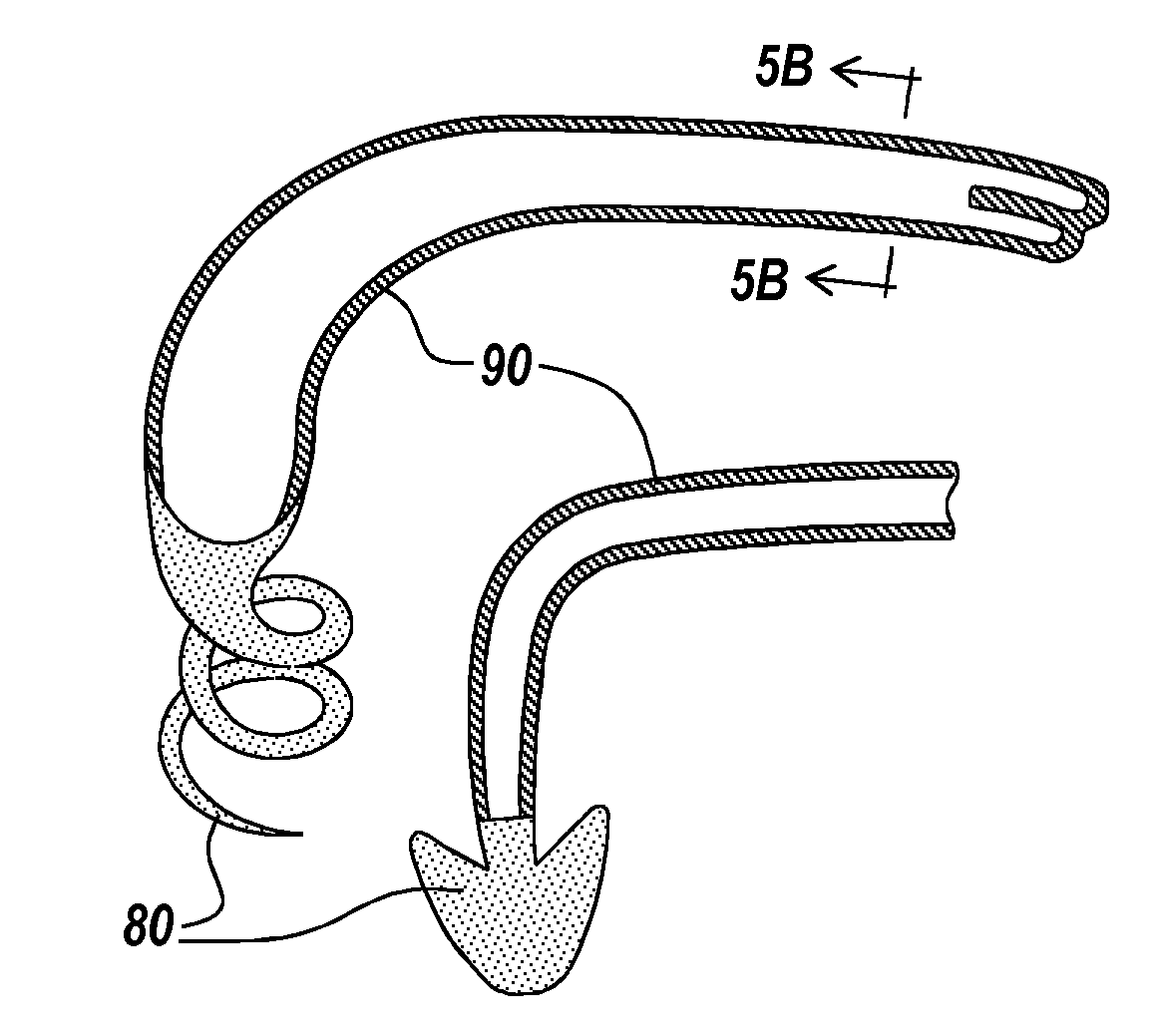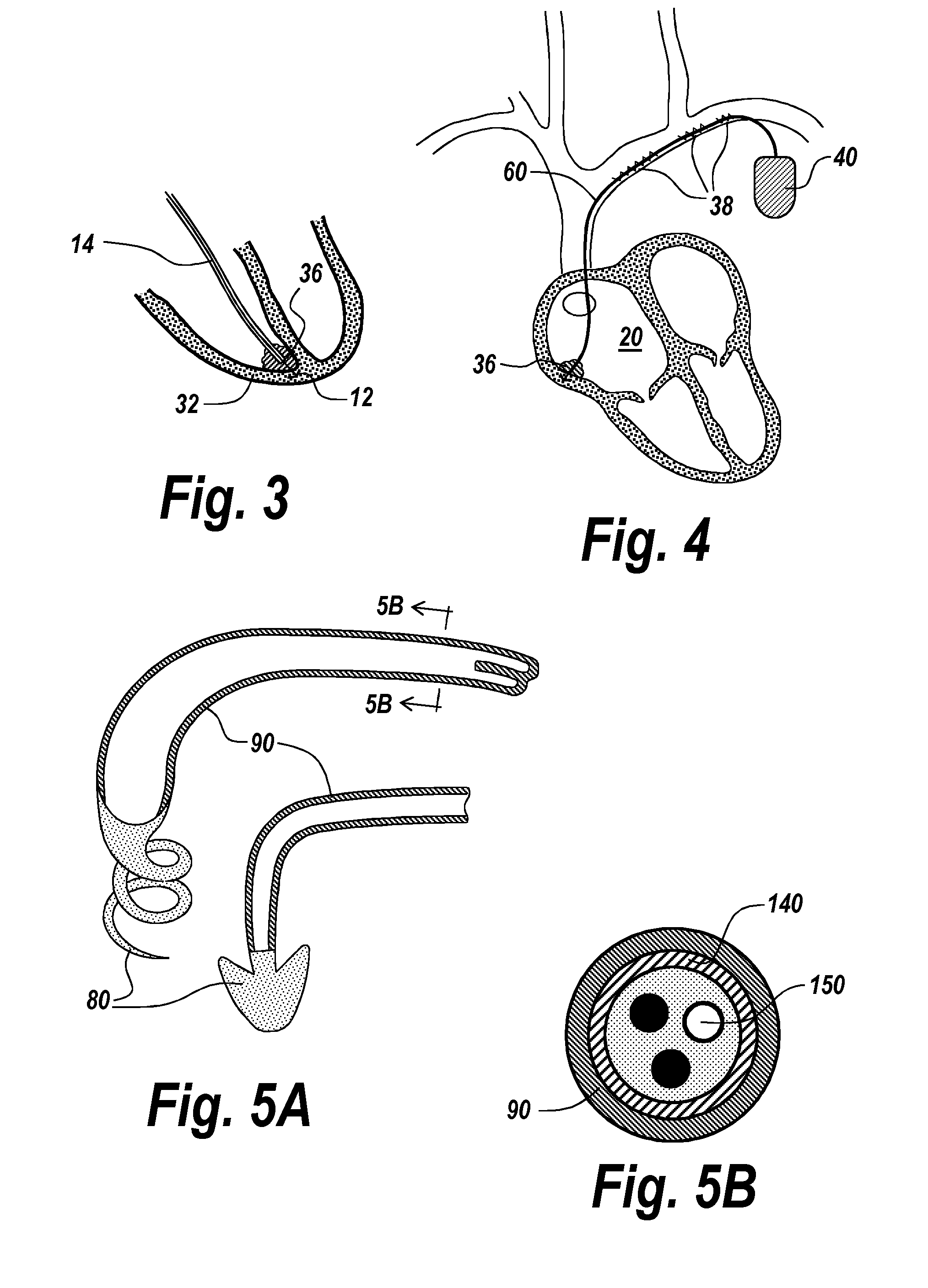Implantable Medical Devices, Methods of Use, and Apparatus for Extraction Thereof
a technology for implanted objects and medical devices, applied in the field of devices and methods for the removal of implanted objects, can solve the problems of increasing electrode resistance, fibrous scar tissue often forms, and the endocardial lead fails occasionally, so as to promote the release of the exterior surface
- Summary
- Abstract
- Description
- Claims
- Application Information
AI Technical Summary
Benefits of technology
Problems solved by technology
Method used
Image
Examples
Embodiment Construction
[0052]The present disclosure relates generally to devices and methods for removal of an implanted object from a subject's body, and more particularly to devices and methods for removal of endocardial leads from a patient's body using selected application of energy to the leads.
[0053]One aspect of the present disclosure relates an implantable medical device. The implantable medical device can include a main body portion having at least one photosensitive nanoparticle associated therewith. Delivery of energy to the main body portion promotes extraction of said implantable medical device from a subject.
[0054]Another aspect of the present disclosure relates to a method for extracting an implanted medical device from a subject. One step of the method includes identifying a medical device implanted in the subject. The medical device can comprise a main body portion including at least one photosensitive nanoparticle and / or photosensitizer associated therewith. Next, an amount of energy is ...
PUM
 Login to View More
Login to View More Abstract
Description
Claims
Application Information
 Login to View More
Login to View More - R&D
- Intellectual Property
- Life Sciences
- Materials
- Tech Scout
- Unparalleled Data Quality
- Higher Quality Content
- 60% Fewer Hallucinations
Browse by: Latest US Patents, China's latest patents, Technical Efficacy Thesaurus, Application Domain, Technology Topic, Popular Technical Reports.
© 2025 PatSnap. All rights reserved.Legal|Privacy policy|Modern Slavery Act Transparency Statement|Sitemap|About US| Contact US: help@patsnap.com



